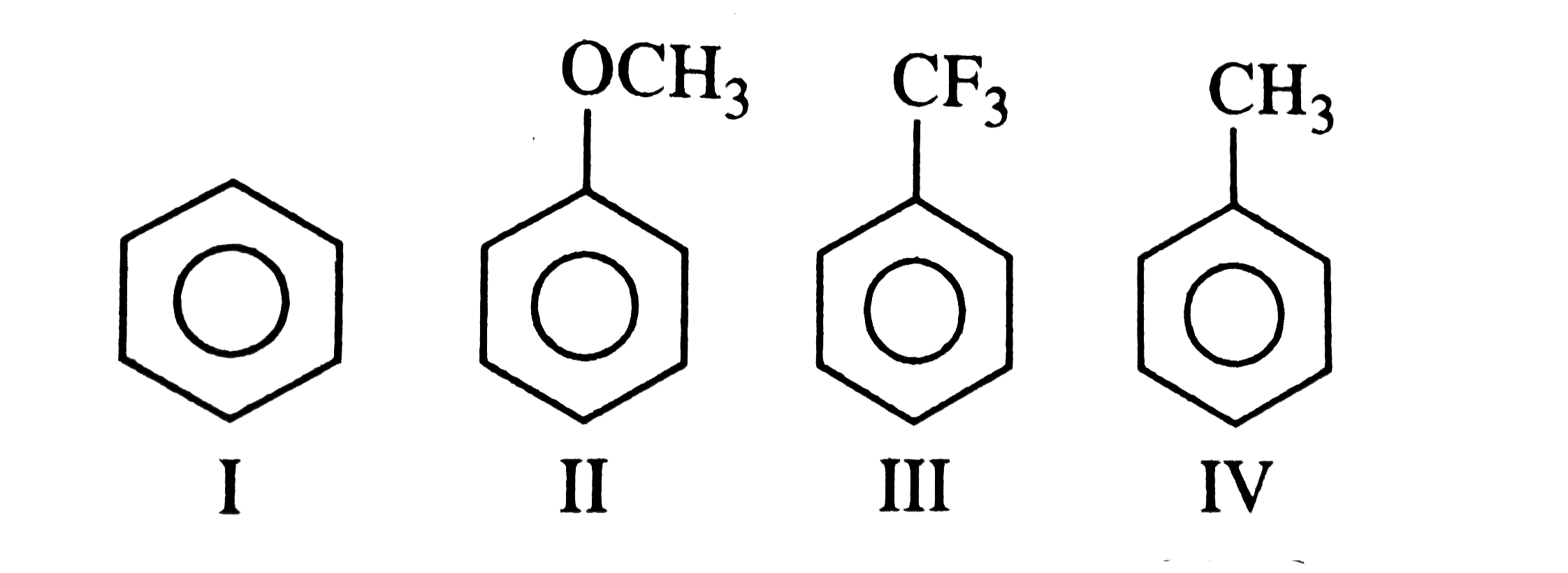Discuss the following:
(i) Cleavage off ethers by acids.
(ii) Electrophilic substitution reactions in arojmatic ethers.
Step-by-Step Solution
1. Understanding Ethers: Ethers are compounds with the general structure R-O-R', where R and R' can be alkyl or aryl groups.
2. Reaction with Acids: When ethers are treated with strong acids (like HX, where X is a halogen), they undergo cleavage. The acid protonates the ether oxygen, making it a better leaving group.
3. Protonation of Ether: The first step involves the protonation of the ether oxygen atom by the acid (H⁺). This forms an oxonium ion (R-OH₂⁺), which is more reactive.
4. Nucleophilic Attack: The halide ion (X⁻) from the acid then attacks the carbon atom bonded to the oxygen. This can happen through two different mechanisms:
- SN1 Mechanism: If the ether is a tertiary ether (R-O-R' where R is tertiary), the cleavage occurs via an SN1 mechanism. The bond between the carbon and the oxygen breaks, leading to the formation of a carbocation intermediate.
- SN2 Mechanism: If the ether is primary or secondary, the reaction proceeds via an SN2 mechanism, where the nucleophile attacks the carbon atom from the opposite side, leading to a concerted reaction.
5. Products Formation: The cleavage of the ether results in the formation of an alcohol (ROH) and an alkyl halide (RX).
(ii) Electrophilic Substitution Reactions in Aromatic Ethers
1. Understanding Aromatic Ethers: Aromatic ethers have the general structure Ar-O-R, where Ar is an aromatic ring and R is an alkyl or aryl group.
2. Electron Density on the Ring: The oxygen atom in the ether donates electron density to the aromatic ring through resonance (due to the lone pairs on oxygen). This increases the electron density at the ortho and para positions of the aromatic ring.
3. Electrophilic Attack: When an electrophile (E⁺) approaches the aromatic ether, it is preferentially attracted to the ortho and para positions because of the increased electron density.
4. Formation of Products: The electrophilic substitution results in the formation of ortho and para substituted products. The reaction typically leads to the formation of Ar-E and the regeneration of the ether.
Summary of Key Points
- Cleavage of ethers by acids involves protonation of the ether oxygen followed by nucleophilic attack by halide ions, leading to the formation of alcohols and alkyl halides.
- In aromatic ethers, the increased electron density at the ortho and para positions due to resonance allows for electrophilic substitution reactions, resulting in ortho and para substituted products.
- SN1 Mechanism: If the ether is a tertiary ether (R-O-R' where R is tertiary), the cleavage occurs via an SN1 mechanism. The bond between the carbon and the oxygen breaks, leading to the formation of a carbocation intermediate.
- SN2 Mechanism: If the ether is primary or secondary, the reaction proceeds via an SN2 mechanism, where the nucleophile attacks the carbon atom from the opposite side, leading to a concerted reaction.
- Cleavage of ethers by acids involves protonation of the ether oxygen followed by nucleophilic attack by halide ions, leading to the formation of alcohols and alkyl halides.
- In aromatic ethers, the increased electron density at the ortho and para positions due to resonance allows for electrophilic substitution reactions, resulting in ortho and para substituted products.
Topper's Solved these Questions
- BOOK - PRADEEPCHAPTER - ALCOHOLS, PHENOLS AND ETHERSEXERCISE - ADDITIONAL QUESTIONS (LONG ANSWER QUESTIONS)6videos
ALCOHOLS, PHENOLS AND ETHERS
- BOOK - PRADEEPCHAPTER - ALCOHOLS, PHENOLS AND ETHERSEXERCISE - HIGHER ORDER THINKING SKILLS (QUESTIONS AND PROBLEMS WITH ANSWERS/SOLUTION)5videos
ALCOHOLS, PHENOLS AND ETHERS
- BOOK - PRADEEPCHAPTER - ALCOHOLS, PHENOLS AND ETHERSEXERCISE - ADDITIONAL QUESTIONS (VERY SHORT ANSWER QUESTIONS)58videos
ALCOHOLS, PHENOLS AND ETHERS
- BOOK - PRADEEPCHAPTER - ALDEHYDES, KETONES AND CARBOXYLIC ACIDS EXERCISE - IMPORTANT QUESTIONS FOR BOARD EXAMINATION29videos
ALDEHYDES, KETONES AND CARBOXYLIC ACIDS
Similar Questions
Knowledge Check
- Question 1 - Select One
The ether the undergoes electrophilic substitution reaction is
ACH3OC2H5BC6H5OCH3CCH3OCH3DC2H5OC2H5 - Question 2 - Select One
The ether that undergoes electrophilic substitution reactions is
ACH3OC2H5BC6H5OCH3CCH3OCH3DC2H5OC2H5 - Question 3 - Select One
The ether that undergoes electrophilic substitution reactions is
ACH3OC2H5BC6H5OCH3CCH3OCH3DC2H5OC2H5
In electrophilic substitution reaction nitrobenzene is
View SolutionThe example of an electrophilic substitution reaction is
View SolutionFor an electrophilic aromatic substitution reaction
View SolutionWhich of the following is an electrophilic substitution reaction?
View SolutionThe most reactive of the following towards electrophilic substitution reaction is
 View Solution
View Solution

